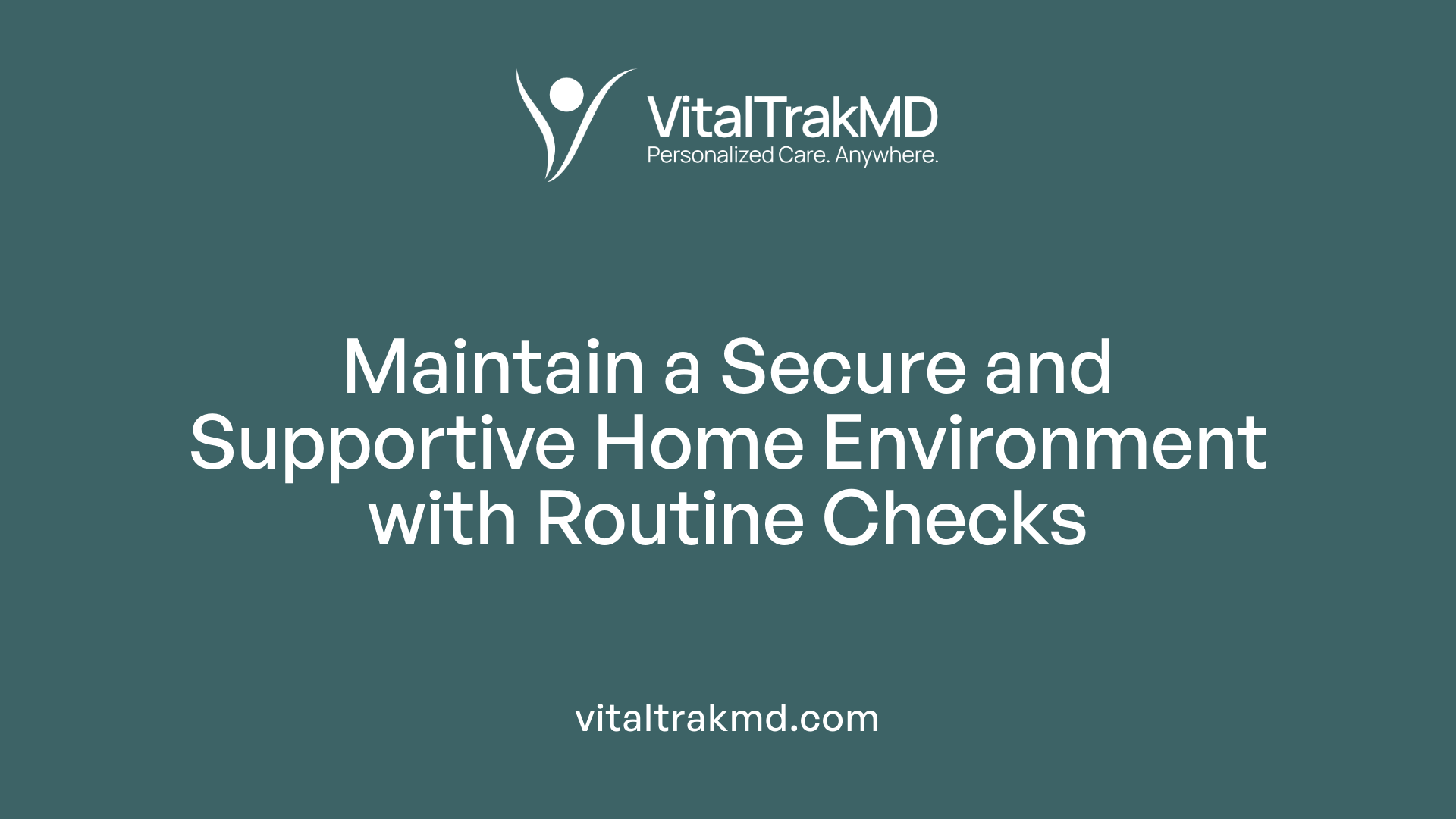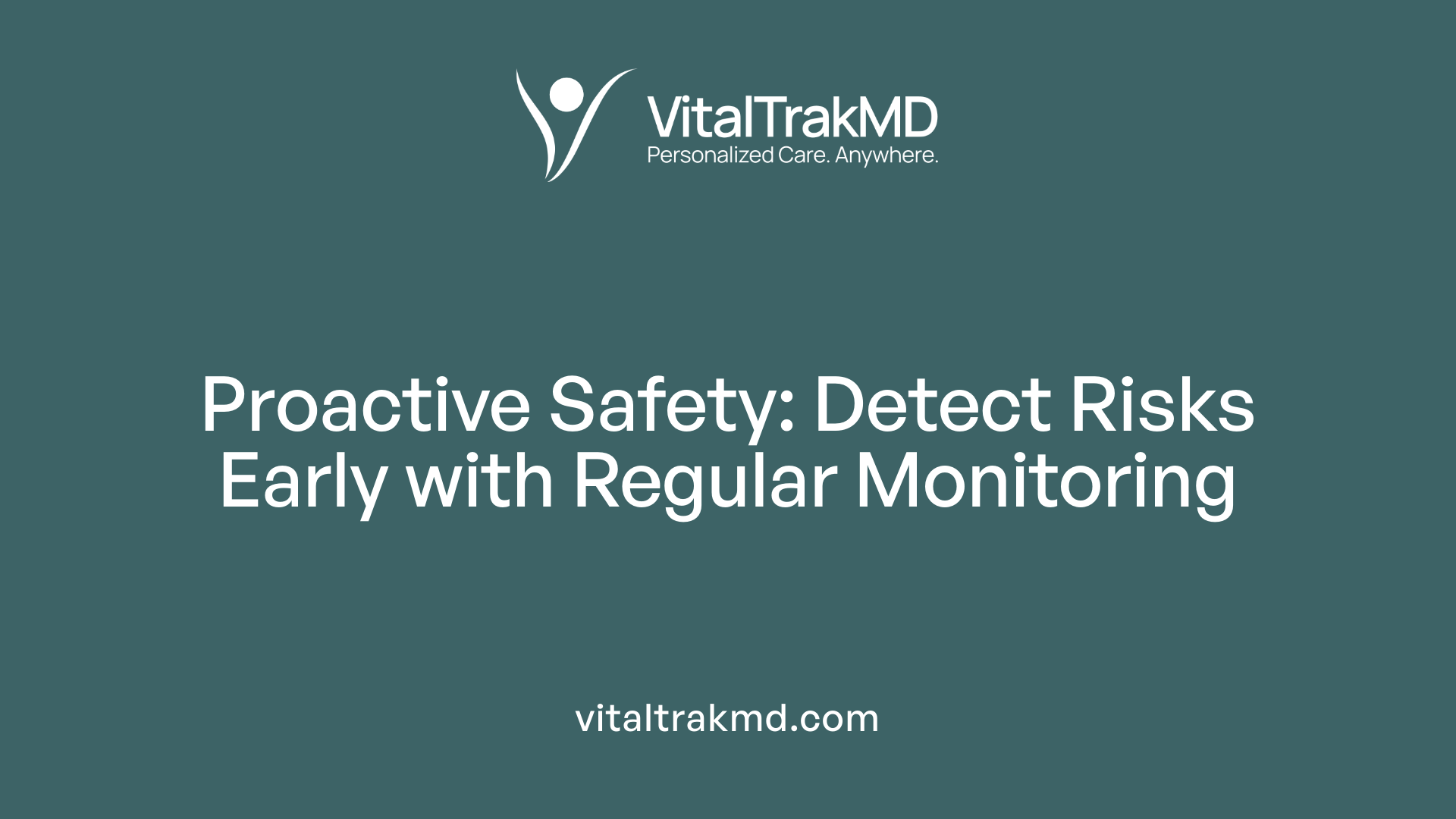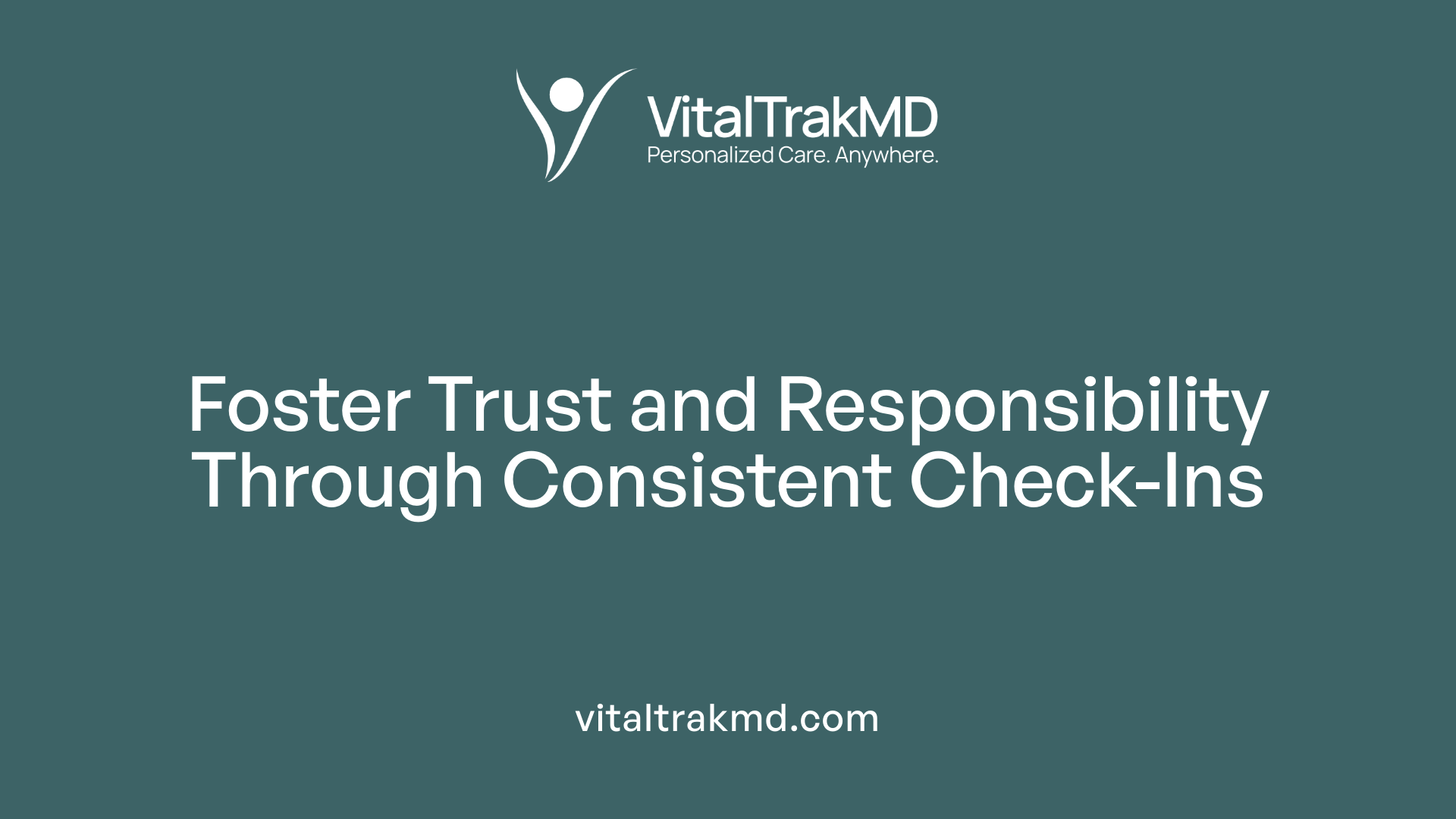How Regular Check-Ins Keep Seniors Accountable in Hybrid Care

Understanding the Critical Role of Regular Check-Ins in Hybrid Elder Support
In today’s evolving healthcare landscape, hybrid care—combining in-person and virtual support—has become essential in maintaining the health, safety, and independence of seniors. Central to this model are routine check-ins, proactive interactions that foster accountability, engagement, and safety. This article explores how regular contact transforms senior care by promoting responsibility, supporting mental and physical health, and facilitating preventive strategies.
Enhancing Accountability and Engagement through Consistent Interactions
What is the role of regular check-ins in promoting accountability and engagement among seniors in hybrid care settings?
Regular check-ins serve as a vital component in caring for seniors, especially within hybrid care models that blend in-person and virtual support. These interactions create structured opportunities for continuous health monitoring, enabling caregivers and healthcare professionals to detect early signs of medical or mental health issues. By maintaining consistent communication, seniors feel more accountable for their well-being, which encourages a proactive approach to health and safety.
In addition to monitoring physical health, check-ins foster trust and open dialogue between seniors and care providers. This transparency helps tailor personalized care plans that address individual needs and preferences. When seniors know they are regularly supported and listened to, they are more likely to engage actively in managing their health.
Addressing social isolation is another critical benefit. Many seniors living alone experience loneliness, which can negatively impact mental health. Routine check-ins, whether by phone, video call, or in-person visits, provide emotional connection, reducing feelings of loneliness and promoting mental well-being.
Furthermore, these interactions facilitate environmental safety assessments, medication management, and home modifications—such as securing rugs or improving lighting—to prevent accidents. As a result, check-ins support seniors in maintaining independence while ensuring safety.
Overall, regular check-ins strengthen seniors’ sense of being valued and supported. This consistent engagement not only improves their health outcomes but also enhances their quality of life, fostering a feeling of community and trust within the care environment.
Supporting Safety, Health, and Independence at Home

How do regular check-ins support safety, health, and independence for seniors aging in place?
Regular check-ins play a vital role in helping seniors maintain their safety, health, and independence while living at home. One of the main benefits is the early detection of health changes. Through routine contact, caregivers can observe signs of medical issues, cognitive decline, or emotional shifts, enabling timely intervention. For example, noticing a senior’s decreased mobility or changes in appearance can lead to prompt medical attention.
Home safety evaluations are another important aspect. During check-ins, assessments of the living environment are conducted to identify hazards like loose rugs, poor lighting, or cluttered pathways. Addressing these concerns proactively helps prevent falls and injuries. Making small adjustments based on regular evaluations can significantly reduce accident risks.
Mental health and emotional well-being also benefit from routine check-ins. Engaging in friendly conversations, reminiscing about past memories, or planning future activities can lift spirits and give seniors a sense of purpose. Consistent interaction also diminishes feelings of loneliness and social isolation, which are common among seniors living alone.
Furthermore, check-ins provide a platform to update and personalize safety plans according to the evolving needs of seniors. As health conditions or living circumstances change, these regular contacts ensure safety measures are adapted accordingly.
In essence, routine check-ins create a safety net that supports seniors’ ability to live independently. They foster early problem detection, promote emotional wellness, and help maintain the environment where seniors feel secure and empowered to manage their daily lives.
Proactive Safety and Preventive Care through Routine Monitoring

How do regular check-ins contribute to proactive safety measures, home assessments, and preventive care?
Regular check-ins are a crucial part of maintaining safety and health in seniors living independently. By establishing consistent communication, caregivers and healthcare professionals can promptly identify and address home hazards such as loose rugs, poor lighting, or unsafe stairways. These assessments help prevent accidents like falls, which are common risks among seniors.
Additionally, frequent interactions provide opportunities for health monitoring. During check-ins, caregivers can observe signs of medical conditions such as high blood pressure or early symptoms of cognitive decline. Catching these issues early allows for timely medical interventions and adjustments in treatment plans, ultimately supporting better health outcomes.
Routine monitoring also helps in updating safety protocols and personal care strategies. For example, a senior showing mobility difficulties may need assistive devices or home modifications. Caregivers can recommend these changes during regular contact, reinforcing a preventive approach.
Incorporating modern technology enhances these efforts further. GPS trackers, health apps, and remote monitoring devices offer real-time data on seniors’ whereabouts and health status. This technology allows for immediate response in case of emergencies and ongoing assessment without intrusive visits.
Overall, consistent check-ins foster a comprehensive approach to senior care. They help maintain an environment that encourages safety, independence, and well-being. The habitual nature of these interactions also reinforces social engagement, which is vital for mental health and reducing feelings of loneliness.
| Aspect | Focus Area | Detail |
|---|---|---|
| Home safety assessments | Hazard identification | Detecting and mitigating physical risks like trip hazards or poor lighting |
| Medical condition monitoring | Early detection of health issues | Monitoring for signs of cognitive decline, hypertension, or other illnesses |
| Preventive health strategies | Health education and planning | Promoting vaccinations, medication management, and lifestyle adjustments |
| Use of technology | Real-time safety data | GPS tracking, health apps for continuous updates |
| Emotional well-being | Maintaining mental health | Regular conversations and social activities to combat loneliness and promote engagement |
In conclusion, regular check-ins are an essential component of proactive senior care. They enable early detection, foster safety improvements, and support mental and physical health, helping seniors to live more independently and securely.
Best Practices for Implementing Effective Check-In Routines

What are best practices for implementing effective check-in routines in senior care?
Implementing successful check-in routines begins with a detailed needs assessment. Caregivers should assess each senior’s individual preferences, health condition, and daily habits to tailor the support accordingly. This personalized approach ensures that communication is meaningful and respectful of the senior’s comfort.
Establishing a consistent schedule is crucial. Whether through daily calls, virtual visits, or automated systems, predictable routines help seniors feel secure and give loved ones peace of mind. Incorporating various methods such as phone calls, video chats, or in-home visits makes the process accessible and engaging.
Routine activities can include checking on medication adherence, meal times, safety within the home environment, and emotional well-being. Encouraging seniors to reminisce, share experiences, or plan future activities fosters mental health and cognitive engagement.
Flexibility is vital. Routines should adapt to spontaneous needs or unexpected events, maintaining relevance and enjoyment. Caregivers should also prioritize privacy and obtain informed consent every step of the way, respecting the senior’s autonomy.
Regular reviews of the check-in process allow for adjustments based on changing health or personal circumstances. Personalization of these routines enhances effectiveness, ensuring that support remains aligned with evolving needs.
Furthermore, integrating check-ins into the overall care plan facilitates coordination with healthcare providers, ensuring that safety concerns, health issues, and social needs are addressed holistically. Educating caregivers about these practices fosters consistent and empathetic support, ultimately improving health outcomes and quality of life for seniors.
Strengthening Caregiver-Recipient Relationships for Better Responsibility and Accountability

What are the different types of check-in services available for seniors?
To support seniors’ safety and health, a variety of check-in options exist. These include daily call services where loved ones or caregivers check in regularly via phone. Emergency alert systems enable seniors to quickly summon help during crises. Automated monitoring services use technology to track activity and contact caregivers if unusual patterns are detected. In-home check services involve caregivers or volunteers visiting seniors at scheduled times.
Each type offers unique advantages, and choosing the right one depends on individual needs and preferences.
What are best practices for implementing check-in services?
Effective check-in programs begin with thorough assessments. Caregivers should evaluate seniors’ needs, health conditions, and personal preferences to tailor the service. Privacy and consent should always be prioritized to respect autonomy. Ease of use is crucial—devices and methods should be simple and accessible.
Personalization, such as scheduling check-ins around routines or including preferred communication methods, enhances effectiveness. Regular review and adjustments help accommodate changing needs. Integration with overall care plans ensures consistency in support, while ongoing education and support empower seniors and family members to use the services confidently.
How do regular check-ins improve emergency responses?
Consistent check-ins serve as early warning systems. They enable rapid detection of emergencies or health issues, especially for seniors living alone. For example, a missed call or an unusual response can signal a problem requiring immediate attention.
A daily check-in can be lifesaving, providing reassurance that help is accessible when needed. It can also reduce the impact of accidents or health crises, allowing for quicker intervention.
How do check-ins contribute to family peace of mind?
Knowing that their loved ones are regularly checked on offers reassurance to family members. This routine confirmation that seniors are safe and well helps alleviate worries and reduces feelings of helplessness.
Moreover, check-ins boost seniors’ confidence in their independence, as they retain control over their daily routine while staying connected with support systems.
In what ways do check-ins support mental and physical health?
Regular communication can positively influence mental health. Sharing stories, reminiscing, or discussing future plans can improve mood, cognitive function, and emotional well-being.
Check-ins also support physical health by monitoring for age-related vulnerabilities. For instance, caregivers can observe signs of mobility issues, medication adherence, or household safety hazards during interactions.
How does consistent contact strengthen emotional bonds?
Ongoing check-ins foster emotional closeness. Regular conversations and participation in meaningful activities reinforce feelings of being cared for and valued. This is especially important for seniors at risk of social isolation.
In addition, virtual check-ins can help maintain social engagement, which is crucial for mental health and combating loneliness.
When are welfare checks necessary?
Welfare checks are recommended if there are concerns about a senior’s behavior or if contact has been unexpectedly lost. During weather extremes, routine welfare checks can prevent temperature-related health issues.
These checks are essential for safeguarding aging individuals living alone and ensure quick intervention if any problems arise.
What role do check-ins play in fall prevention and home safety?
Regular check-ins can help identify hazards in the home environment, such as loose rugs or poor lighting, that might lead to falls or injuries. Routine assessments facilitate timely modifications to improve safety.
These preventative measures, combined with ongoing monitoring, help maintain a secure living space and reduce accidental harm.
How do check-ins support early detection of cognitive or mental health issues?
Monitoring during check-ins can reveal early signs of cognitive decline or mental health concerns. Changes in appearance, mood, or behavior—such as withdrawal or confusion—prompt earlier intervention.
Prompt detection allows caregivers or healthcare providers to implement support strategies before issues worsen.
What is the importance of regular safety assessments and maintenance?
Quarterly safety checks help keep the environment safe by testing detectors, clearing hazards, and performing routine household maintenance. Establishing a predictable schedule ensures ongoing safety improvements.
Integrating check-ins with broader care efforts creates a comprehensive approach that adapts to evolving needs, promoting independence and reducing risks.
| Aspect | Benefits | Implementation Notes |
|---|---|---|
| Safety Monitoring | Prevents falls, detects hazards | Regular environmental assessments during check-ins |
| Health Tracking | Early illness detection | Observing physical cues and conversation |
| Mental Health Support | Reduces loneliness, early issue detection | Sharing activities and discussing feelings |
| Emergency Preparedness | Quick response to crises | Emergency alert systems and daily check-ins |
| Emotional Connection | Strengthens bonds | Consistent communication and personalized interactions |
This comprehensive approach to regular check-ins supports seniors' health, safety, and emotional well-being, empowering them to maintain independence with confidence.
Harnessing the Power of Routine for a Safer, Healthier Future
In conclusion, regular check-ins are a cornerstone of effective hybrid senior care, bridging the physical divide between caregivers and seniors. These routines not only promote safety and health but also reinforce accountability, independence, and emotional well-being. By adopting best practices—personalized approaches, respectful communication, and proactive assessments—caregivers and health systems can ensure that seniors aging in place continue to thrive with dignity and security. As technology advances and caregiver strategies evolve, embracing consistent, meaningful contact remains essential in fostering a connected, proactive community for our senior populations.
References
- Senior Check-In Services & Best Practices - Keystone Health
- How a Simple Check-In Helps Seniors Stay Independent
- Checking in with Seniors: Ways to Show You Care
- Importance-of-Regular-Check-Ins-On-Seniors-To-Reduce-Falls
- The Importance of Regular Health Screenings for Older Adults
- Evidence and User Considerations of Home Health Monitoring for ...
- The Importance of Preventative Health Checkups for Senior Citizens
Recent articles
Want to Feel Better and Live Healthier?
Join hundreds of patients taking control of their health with personalized care that fits their life – not the other way around.
Rated 4.8/5 by 32+ customers







